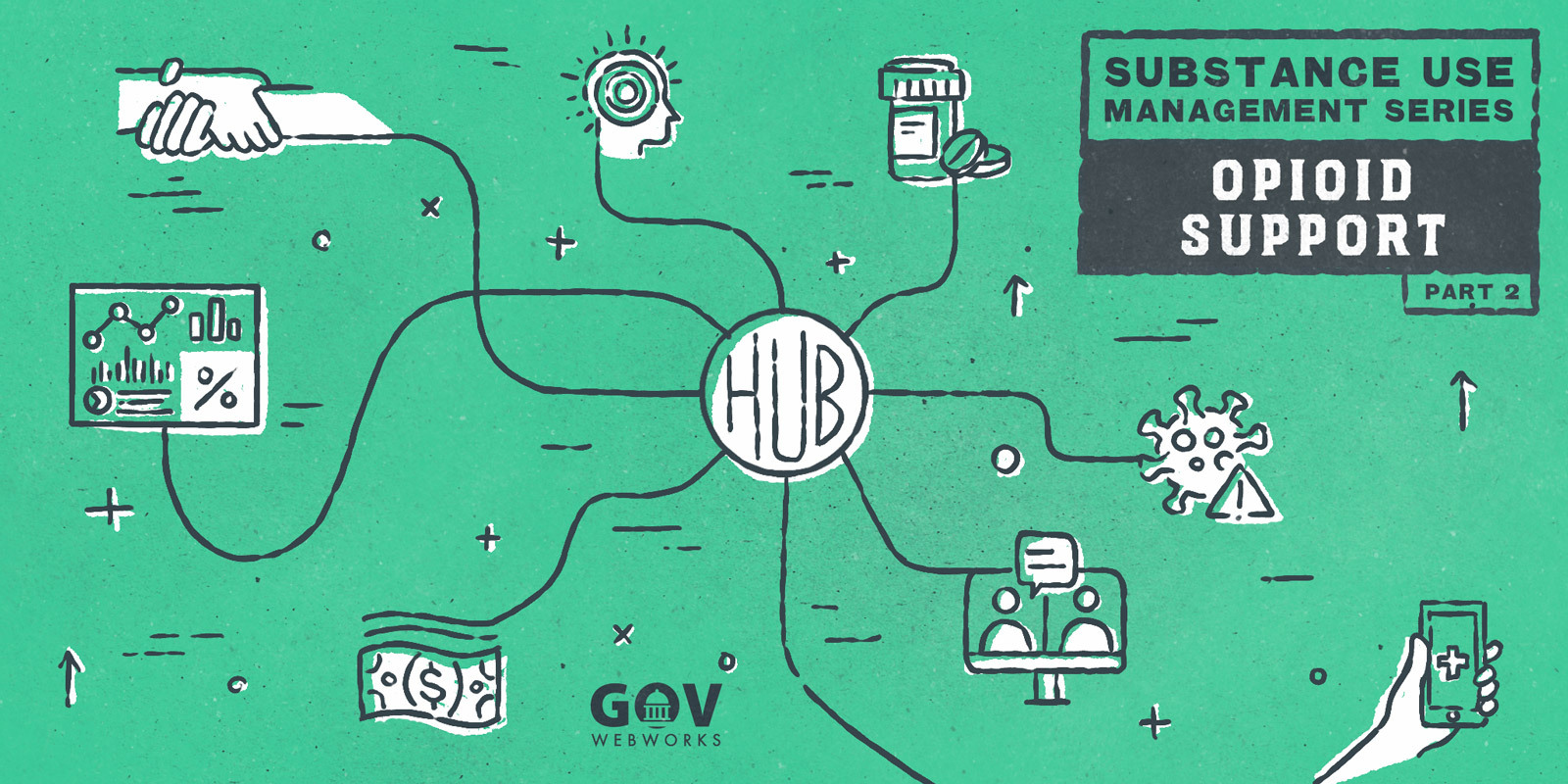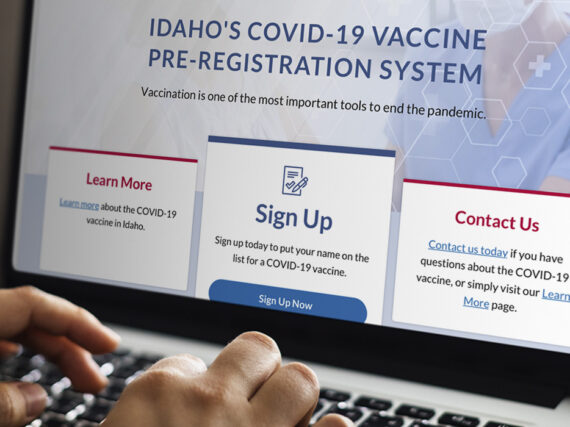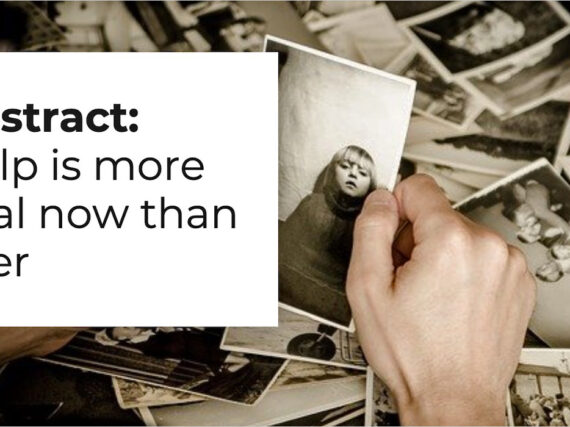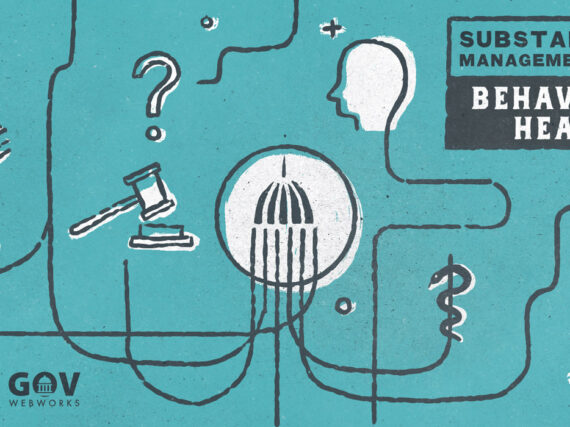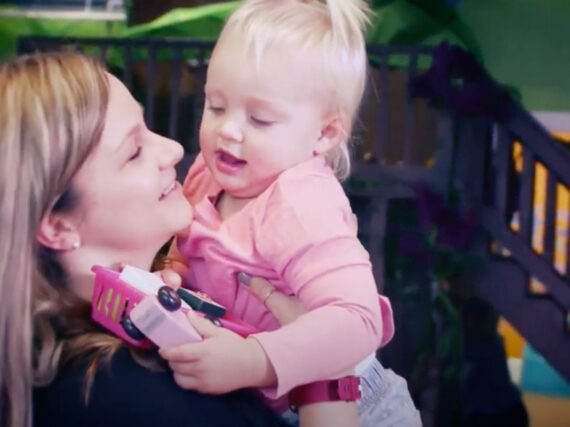Covid-19 may dominate the headlines, but the opioid epidemic is also taking lives, and help is needed. Anxiety caused by a novel virus, loss of employment, and forced social distancing has led to a rise in behavioral health issues, including decreased mental health, increased alcohol consumption, and drug use.
The Doorway in New Hampshire reports a 45% increase in requests for substance use services compared to a year ago. During this crisis, providing easy access to counseling and support is more vital than ever. However, many state agencies are struggling to connect people to the right resources to move from “I need help” to “I have the help I need.” There are multiple steps in between with no easy paths to follow. Covid has fostered the perfect conditions for people to silently lose the way.
Furthermore, finding help online can feel like untangling a ball of yarn. A simple search for “I need help with…” brings up an overwhelming number of options. How does someone know which to chose to get the best results?
Finding connection in a disconnected network
“The opposite of addiction isn’t recovery, it’s connection,” King County Strategic Advisor Brad Finegood says, quoting one of his favorite authors Johann Hari. The concern is that connection is difficult to foster when everyone is socially distanced and progress is harder to track.
States have been trying to solve this issue with a patchwork of grants, non-profit support, and Medicaid for longer term goals, but because of Covid, a person in need will understandably have a harder time sorting through all the noise to find the right path. If it’s difficult for a person without immediate needs, how can we expect individuals dealing with life-or-death issues to be able to navigate the complexity of this overloaded virtual world?
Regaining control will require agencies to deploy better tools and increase their coordination with coalition partners. Internal resources must be marshaled with solid data by using shared data dashboards. Additionally, the public must be able to find the right resources with less friction, using more intuitive resource portals and mobile apps. States need to leverage technology more than ever if they want to win this battle. To do this they must tackle the issue from both angles:
- Data dashboards to coordinate internal resources, using realtime data to deploy resources.
- Updated resource portals to make it easy for users to find available treatment and services.
What works now
Now seemed like a good time to check in with some of the organizations and areas covered in our Opioids Series to see how they’re faring during the pandemic. The news is sobering, but the response is hopeful. For more detailed information, contact us and we’ll send you a copy of our white paper on the topic.
King County – Washington State
Snohomish County Washington had the unenviable honor of becoming the first place in the US with a confirmed case of Covid-19. Consequently, neighboring King County, and the City of Seattle, had no choice but to react quickly to the pandemic.
King County was already dealing with large numbers of people facing other life challenges, such as homelessness and drug use, before the challenges posed by Covid-19. Previously, they had relied upon a system where services were delivered at physical, fixed-site locations. Services were almost always in-person, and medications like methadone were often distributed daily.
However, care providers in King County are a savvy bunch. They were already using data to their advantage to help combat overdoses. Providers distributed more treatments like naloxone, and reaffirmed guidance for harm reduction, such as not using alone. They also leveraged other technology and web portals have become focal points for information. Data is analyzed via shared dashboards. Intake appointments are now virtual and conducted over the phone or online.
Covid Update: King County took advantage of a change in regulation to provide life-saving medications like methadone as take-home doses. These doses are designed for up to a month, instead of being given daily. This gives people access to medication more easily with less contact, making treatment more accessible, while limiting possible Covid exposure.
The Doorway – New Hampshire
New Hampshire, like many other states, has struggled with the effects of the opioid crisis. Burdened with the third highest overdose rate in the country a few years ago, it had seen as many as 39 overdoses per 100,000 people. With a State Opioid Response grant from SAMHSA, New Hampshire established a customer facing resource portal called The Doorway to publicize available resources, and provide better communication regarding available resources. This web portal is a “doorway” for the many resources available throughout the state, including services such regional screening, evaluation, care coordination, treatment, and long-term recovery supports. Additionally, it links to support for job training, education, assistance with food, childcare, and transportation.
Covid Update: Due to Covid, support systems are no longer present in the same way, and access to treatment is harder. With this in mind, the state of New Hampshire set a goal of reducing overdose fatalities in the state by 8-12% by August of 2020. With more than 15,000 people served since implementation in January 2019, even with the uphill battle due to Covid-19, this coalition is certainly making a difference.
Project Lazarus – North Carolina
“In-person groups are a critical part of how successful therapy works, reducing stigma and providing a trusted support system,” says non-profit Project Lazarus CEO Fred Brason. “However, forced social isolation due to Covid has made this very difficult.”
Like King County and other providers, Project Lazarus in North Carolina is using some technology to promote awareness and coordinate resources. They provide training and technical assistance to communities and clinicians, using experience, data, and coalitions to help prevent overdoses and to establish effective substance-use treatment and support.
Covid Update: Project Lazarus now hosts virtual meetings to assist with intake, training, and technical assistance. Peer supported counseling is used alongside medication assisted treatment, enabling people to meet in small, peer-supported groups as they move towards recovery. What is notable is that despite the high value placed on in-person connections, organizations like Project Lazarus have skillfully adapted to serve people where they are at, using technology to provide better connections between providers, and more connectivity between clients.
State and Federal funding
When it comes to funding for opioid response tools and technology updates, state agencies can look into a number of options. The Department of HHS released $3 billion over 2 years for their State Opioid Response grant. This includes an additional $85 million for fiscal year 2021. Through this grant, state agencies can expand access to services like MAT, and develop tailored approaches to prevention, treatment, and recovery from opioid use disorders. These grants are a lifeline for many agencies wanting to boast their response initiatives.
The Rural Community Toolbox is an online clearinghouse to connect rural leaders with resources from Federal departments to help rural communities remain attractive places to live and work. By offering funding specifically tailored to rural environments, local communities can better combat drug addiction in their area. Resources on this site include access to funding, helpful data, and other useful information on a wide range of topics, including, health, Covid response, homelessness, substance use, and mental health issues.
SAMHSA provides crisis intervention services, mental and substance use disorder treatment, and other related recovery support for children and adults impacted by the Covid-19 pandemic. An additional $35 million was added to the Community Mental Health Services Block Grant, providing $757.6 million for fiscal year 2021 to address the needs of those with serious mental illnesses. Even with these grants, and access to Medicare for many states, there are still many people with mental health or substance use issues who still do not receive the help they need. Via Certified Behavioral Health Clinic Grants, $225 million has been provided in 2021 to expand the capacity of organizations and clinics. These entities can receive funding to help individuals navigate crisis, manage co-occurring issues, find and sustain employment, and maintain a safe place to live in the community.
The Rural Communities Opioid Response Program is overseen by the Health Resources and Services Administration (HRSA). This entity provides resources for planning, implementation, Neo-natal and MAT programs as part of a multi-year initiative by the Federal government to address barriers to treatment for substance use disorder. Support for Rural Centers of Excellence helps to further evidence-based interventions in rural communities.
In summary
As we have seen, isolation is causing increased use of illicit substances, and increasing risk for users when using alone. It is imperative during these times for agencies to offer robust coordination and tools for people to connect with services.
Technology like a well designed resource portal that provides quick access to local or virtual support services can help to solve some of these issues. Add to that, the behind the scenes collaboration of a data dashboard gives states access to realtime data so they can respond when and where it is most needed.
The combination of these tools is the key to success for states that want to make a difference.
Learn more
- Download the Managing Opioid Issues white paper
- Contact us to learn more about creating a substance abuse assistance portal
- Opioids Crisis Solutions Series Part 1: How opioids took America by surprise, and what states can do about it, by Ravi Jackson
- Opioids Crisis Solutions Series Part 2: Three opioid treatment models that states are using to save lives, by Ravi Jackson
- Opioids Crisis Solutions Series Part 3: How states find funding to stem the crisis, by Ravi Jackson
